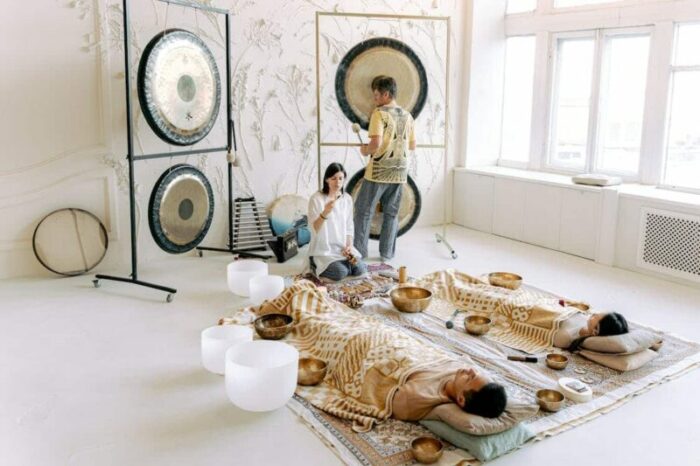When I asked a practitioner what sound bowls are used for, they answered that they use Buddhist singing bowls for healing and meditation. I was skeptical about acknowledging this type of treatment.
I did what every person does when they come across something they don’t understand; I Googled it. What my research yielded was enlightening, but it still did not change my opinion.
Concrete scientific evidence must be provided for a person like me to agree on anything. I’m sure many people share this type of mentality.
Then I came across a youtube video that helped me open my mind to the possibility of using sound to promote the body to heal itself.
Sound Healing and Modern Medicine
Singing bowls produce sounds that are used for meditation and therapy. Although they have been used to treat illnesses since ancient times, the scientific backing for this is still far behind. The line
“Any sufficiently advanced technology is indistinguishable from magic” by Arthur C. Clark
comes to mind. In this case, the benefits of sound healing still need to be scientifically quantified. Therefore, it is still deemed by most as pseudoscience.
Our understanding of sound waves, like everything else, is constantly evolving. Dr. Lee Bartel’s research only covers the effects of 40-hertz sounds. The potential benefits of other frequencies are still being researched by most of his colleagues.
The sound of singing bowls stimulates your parasympathetic nervous system. This system is involved in the “rest and digest” functions of the body. Natural healing and the optimal conversion of food to energy are just some of these functions.
Singing Bowls Physical and Mental Health
- Promote restorative sleep:
- Normalize blood pressure
- Improves digestion
- Better energy levels
- Relax respiratory rate
- Pain relief
- Stress relief
- Improves focus
- Mitigate anxiety and depression

How to Use Singing Bowls for Healing
Here are the standard methods for using a great singing bowl:
- Singing bowls vibrate and make a deep, pleasing sound when lightly struck by a cloth-covered wooden mallet. The bowl rings for an average of 30 – 50 seconds.
- You can touch the mallet to the outer side of the bowl’s rim and make a circular motion causing the bowl to vibrate and produce a low-tone hum.
These next are for targeted illnesses or with the help of sound therapists:
- Putting the singing bowl upside down on top of the patient’s head and striking it to let the vibration travel from your head to the rest of your body. This method is used to cure insomnia and headaches.
- While the patient sits, the therapist touches the base of the bowl to a part of the patient’s body. They then ring the bowl as they move the bowl to different parts of the body. This method is an effective method for pain relief.
- The sound therapist rings the singing bowl in their hand and brings it close to the patient. The bowl does not touch the patient. Instead, the vibrations of the singing bowl are felt. The therapist then slowly moves the bowl around the body.
- The patient lies down amid several singing bowls, each keyed to different notes. The sound therapist strikes each bowl in a predetermined order. They let the ringing finish before hitting it again in the same or different sequences.

Conclusion
Scientific information about Sound medication is slowly coming to light. In the future, a doctor can prescribe sound therapy as a viable and effective treatment.
FAQ
Can you use Tibetan chanting for healing?
Buddist chanting, specifically mantras, is an ancient practice that has been known to treat illnesses. The belief is that all parts of the body are interdependent. Therefore, using sound to harmonize an underlying energy disturbance, chanting can treat the body as a whole, not just the symptoms.
Can anyone use a Buddhist singing bowl, or do you learn it from an expert?
Buddist chanting, specifically mantras, is an ancient practice that has been known to treat illnesses. The belief is that all parts of the body are interdependent. Therefore, using sound to harmonize an underlying energy disturbance, chanting can treat the body as a whole, not just the symptoms.






